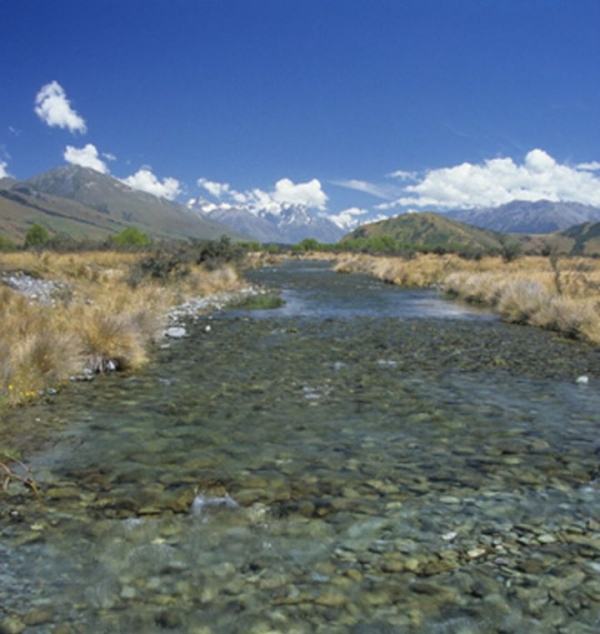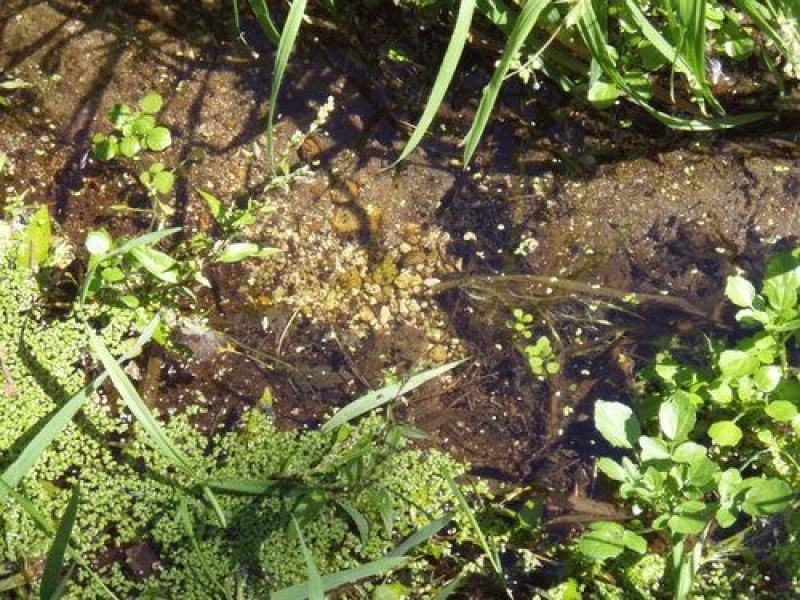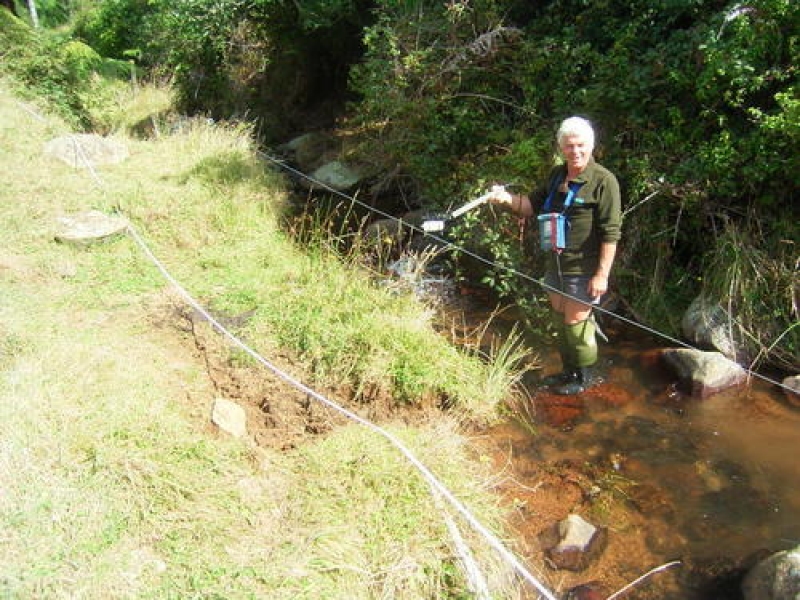Streams play a key role in the ecosystems of New Zealand’s unique landscape. They feed and link together freshwater sources, maintain good water quality and support habitats that sustain our biodiversity. Streams vary in size, discharge, source, function and natural cycle, but each has a pivotal role within its catchment area and provides numerous benefits for wildlife and people.
Introduction
Many streams have been degraded by development, industrial activity or bad agricultural practices over the years. Communities and landowners have an environmental and economic interest in returning these waterways to their original state, and many projects with this aim are currently underway or in development. NIWA performs a wide range of research to develop the techniques and knowledge to help restore streams and their ecosystems.
Biodiversity
Streams bolster our biodiversity by performing a number of important ecological functions, including:
- providing natural drainage for the landscape
- providing habitats for a wide range of species
- completing the life cycles for many invertebrates
- filtering pollutants that have washed off urban and agricultural land, which also prevents downstream degradation of lakes and rivers
- processing leaf and other organic material into fine particles, which are an important food source for organisms further downstream
- distributing nutrients to downstream water bodies
- holding back sediment which would otherwise reduce water quality and disturb aquatic animal life cycles and the growth of macrophytes
- in the case of headwater streams, mitigating the effects of heavy rain by slowing runoff, minimising downstream erosion and encouraging groundwater recharge.
They also provide recreational benefits such as fishing, boating and aesthetic value, and are culturally and spiritually significant to many people.
Restoring Stream Life
There have been cases where human activity has had such an impact on stream habitats, and the plants and animal they support, that many species can no longer survive and their populations collapse. The worst examples of this have led to a wider awareness of the value of stream restoration and conservation. Degraded streams can be restored if we change the activities that caused the initial damage, and then rejuvenate the surrounding habitats by reintroducing the correct plants and animals.
Reintroducing plants and animals
If successful, reintroducing plants or animals from another location creates new, self-sustaining populations. Reintroduction kick-starts the recovery process by adding key species that will increase the likelihood of colonisation by others, particularly when barriers to natural dispersal are unable to be removed. Species of fish, koura and insects are commonly reintroduced.
- Reintroducing giant kōkopu to Nukumea Stream
- Restoring shellfish habitats in estuaries
- Invertebrates and stream health
Measures to reintroduce plant species include habitat restoration and riparian planting. Increased riparian vegetation is not only aesthetically-pleasing, it also has the benefit of reducing the impact of human-induced activities on our waterways, and therefore improving water quality. It shades and cools water temperature, making it more favourable to aquatic life such as fish and invertebrates, while suppressing nuisance growths of algae. It also enhances flood and erosion control.
Reintroduction can also be a suitable option to repopulate habitats suffering from slow, post-restoration colonisation. Persistent reintroduction may be required as the main goal is to ensure that restored populations persist over time, and if necessary, are supplemented with additional introductions.
the full range of natural variety and variability within and among living organisms, and the ecological and environmental complexes in which they occur. It encompasses multiple levels of organisation, including genes, species, communities and ecosystems. an animal without a backbone, such as insects and crustaceans. the physical and biological environment or area in which a species and population naturally occurs and the area which it depends on for its survival. the source or upper part of a stream or river. plants in lakes, streams and wetlands that are visible to the naked eye. the movement of individuals across population boundaries. plant life living or located on the bank of a stream or river.




